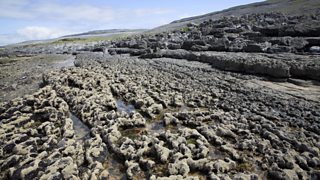Coastal Processes
- Created by: Angela03
- Created on: 02-06-18 13:47
Waves
The energy of a wave comes from the wind. When the wind blows on the the surface of the water it causes parts of the water to be pushed up and some to be pushed down.
The more wind the bigger the waves
The longer the fetch the bigger the waves
Fetch: The distance the wind blows across the water
Prevailing wind: The most frequent wind direction of a location. The UK's is South-West
Swash goes in and backwash goes out.
Constructive Waves
Wave height: small and low
Wave length: big
Wave break: gentle
Swash strength: strong
Backwash strength: weak
They deposit sediment on to the beach which builds it up
Destructive Waves
Wave height: high
Wave length: short
Wave break: steep
Swash strength: weak
Backwash strength: strong
They pull sediment off the beach and in to the sea
Longshore Drift
Waves can approach the coast at an angle because of the direction of the prevailing wind.
The swash of the waves carries material up the beach at an angle. The backwash then flows back to the sea in a straight line at 90°.
This movement of material is called transportation.
Continual swash and backwash transports material sideways along the coast. This movement of material is called longshore drift and occurs in a zigzag.
Deposition
When the sea loses energy, it drops the material it has been carrying. This is known as deposition. Deposition can occur on coastlines that have constructive waves.
Factors leading to deposition include:
Waves starting to slow down and lose energy
Shallow water
Sheltered areas, eg bays
Little or no wind
Transportation
Beach material can be moved in four different ways. These are:
Solution - when minerals in rocks like chalk and limestone are dissolved in sea water and then carried in solution. The load is not visible.
Suspension - small particles such as silts and clays are suspended in the flow of the water.
Saltation – where small pieces of shingle or large sand grains are bounced along the sea bed.
Traction – where pebbles and larger material are rolled along the sea bed.
Erosion
Erosion is the wearing away of rock along the coastline. Destructive waves are responsible for erosion on the coastline. There are four types of erosion:
Hydraulic action - this is the sheer power of the waves as they smash against the cliff. Air becomes trapped in the cracks in the rock and causes the rock to break apart.
Abrasion - this is when pebbles grind along a rock platform, much like sandpaper. Over time the rock becomes smooth.
Attrition - this is when rocks that the sea is carrying knock against each other. They break apart to become smaller and more rounded.
Solution - this is when sea water dissolves certain types of rocks. In the UK, chalk and limestone cliffs are prone to this type of erosion.
Mass Movement
Rockfall
Bits of rock fall off the cliff face, usually due to freeze-thaw weathering.
Mass Movement
Mudflow
Saturated soil (soil filled with water) flows down a slope.
Mass Movement
Landslide
Large blocks of rock slide downhill.
Mass Movement
Rotational slip

Saturated soil slumps down a curved surface.
Weathering
Exposed rocks along the coastline can be broken down by the processes of weathering.
Freeze-thaw weathering occurs when rocks are porous (contain holes) or permeable (allow water to pass through).
Weathering
Biological weathering
Plants and animals can also have an effect on rocks. Roots burrow down, weakening the structure of the rock until it breaks away.
Weathering
Chemical weathering
Rainwater and seawater can be a weak acid. If a coastline is made up of rocks such as limestone or chalk, over time they can become dissolved by the acid in the water.

Chemically-weathered limestone
Comments
No comments have yet been made